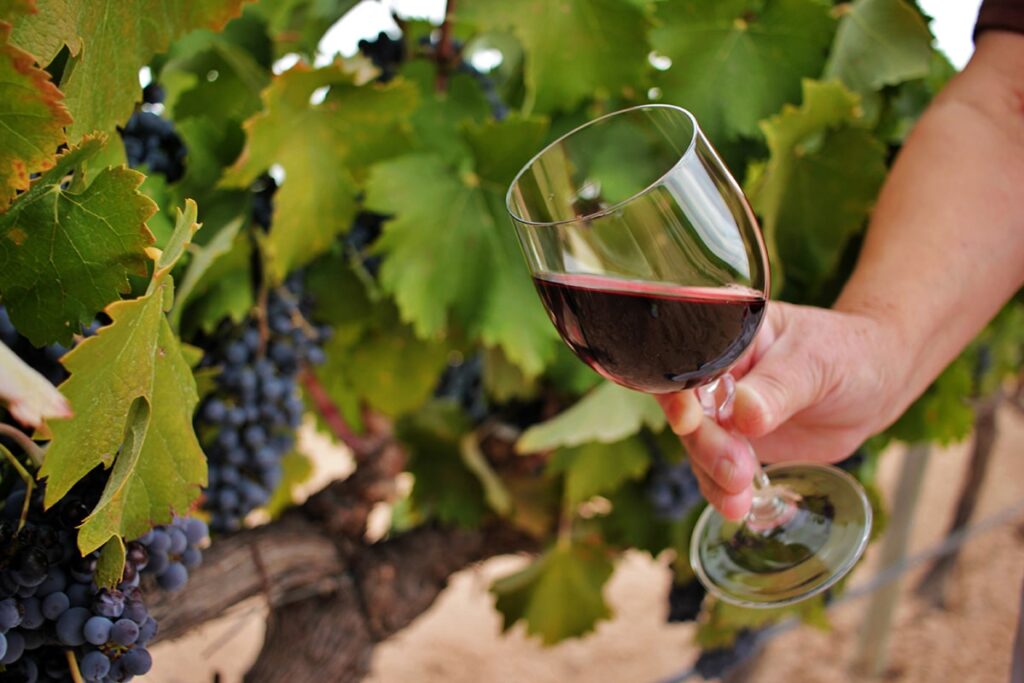Wine production is a very complex process and requires knowledge of numerous elements, such as the stages of winemaking and the composition of grape clusters.
It is necessary to equip oneself with the specific equipment, to well understand the chemical reactions, the processes that are activated and how to give balance to the final product
A decisive role in this sense, is played by tannins.
Tannins are components naturally contained in the solid elements of the must, i.e. skins, stems, marc. Their presence is especially marked in red wines, because they are the ones that undergo the maceration process in contact with these elements, not only for the wine to take on its characteristic red colour, but also to transfer the organoleptic qualities of the tannins into the must and wine.
They are responsible for that ‘astringent’ taste typical of full-bodied, alcoholic, still wines.
A tannic wine, therefore, is not a wine of bad quality, quite the contrary. It is often a balanced wine that allows all the more complex taste and olfactory notes to be appreciated.
In some cases, tannins may also be added during maceration and fermentation to provide a more balanced structure and give the wine a fuller flavour. There are several types of protan uk on the English market and experts in the field know this well.
Beyond this brief aside, however, it may be interesting to learn more about the function of tannins in the winemaking process.
Are tannins present in all wines?
Before delving into the function of tannins in wine, it is necessary to make a fundamental distinction between the tannins present in red wine and those present in white wine.
When one thinks of a tannic wine, in fact, red wine immediately springs to mind, sour, dry, astringent to the palate. It is difficult to think of the presence of tannins even in a white wine, which is lighter, fresher and more enjoyable.
In fact, fermentation involves two separate phases for these two wines, making the process different. A red wine, in fact, in the fermentation phase, is macerated with the solid elements resulting from the crushing, i.e., rape, grape seeds, skins, both to transfer the reddish colour and the flavour of the tannins present in the solid parts. On the contrary, in white wine, this phase is not foreseen. On the contrary, the skins and everything else are immediately removed, precisely to prevent the wine’s flavour from being compromised and thus becoming less pleasant and even bitter.
Nonetheless, tannins may also be present in white wine, where ageing takes place in wooden barrels or with the addition of oenological tannins, as seen above. More ‘orangey’ wines may contain more tannins, because they follow a short maceration phase with the skins to take on the more intense yellow colour.
The amount of tannins in wine, however, is variable and depends on how much there is in the solid components left to macerate. For this reason, when aiming to obtain a particularly tannic wine, it can be useful to use oenological tannins.
What function do tannins have in wine
Tannins, as already mentioned, are naturally present in many fruits, from persimmons to the stones of many fruits, but also in the fibrous part of artichokes and, of course, in grapes.
The astringent effect on the palate, typical when tasting a tannic wine, is due to its ability to bind to salivary proteins and make them precipitate, thus creating that dry mouth effect.
In any case, tannins are used in the wine-making process for two reasons. The first is related to the colouring of the wine. Red wine is called tannic red wine, precisely because tannins give it that particular colour. The second reason is that tannins are rich in antioxidants, so a tannic wine is also a wine that is more likely to keep and age well over time.
In addition, tannins are also primarily responsible for a wine’s body and structure, but also for its long-term stability, balance and aromatic integrity.
For all these reasons, tannins are extremely important, especially in the winemaking process of the most important red wines.








Add Comment